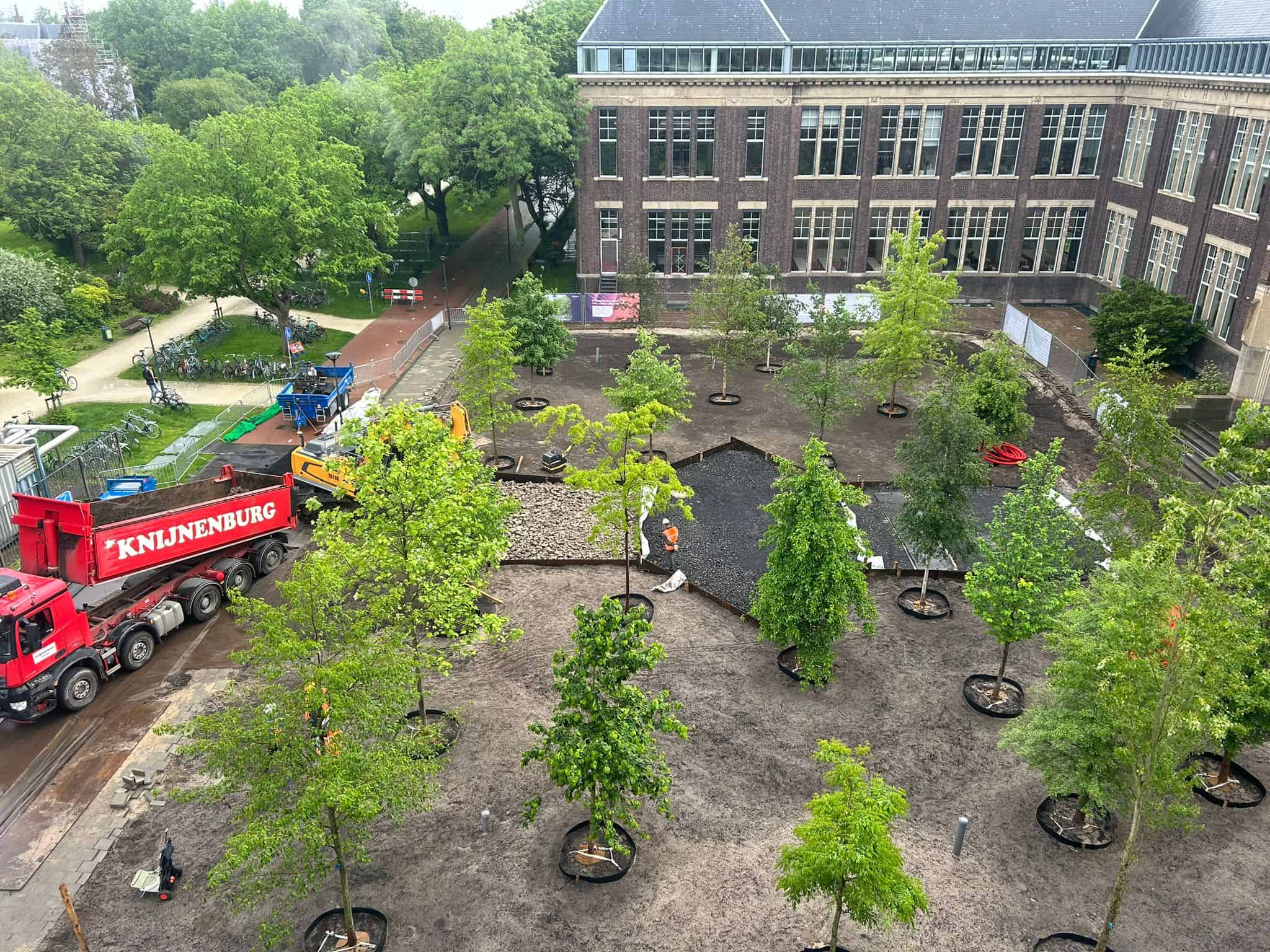
As global mean temperatures keep rising, living in cities feels even warmer. Tall buildings that clog airflow, scarce greenery, and heat-retaining materials such as asphalt can make summer days unbearable. The best option to relieve heat stress is greenery. Yet, there is no silver bullet, and understanding the interplay between nature and the built environment is critical to design climate adaptive cities.
Why this is important:
The world is warming up, and Europe is doing so even faster. At the same time, more people are moving to live in cities, where heat stress is worse. Nature-based solutions are more than welcome to mitigate such stress.
The Delft University of Technology (TU Delft) is taking a step ahead and studying what the future will look like, investigating the intermingling of nature and buildings by mixing them more and more. TU Delft’s grand vision is to establish an EcoCampus, where humans and biodiversity exist. As part of this initiative, the university plans to include more greenery within its premises to create a healthy ecosystem. With this initiative, the campus wants to be more climate-adaptive, keeping its spaces liveable while limiting the effects of climate change.
Some people involved in this endeavor are researcher and landscape architect Nico Tillie, the campus green manager René Hoonhout, and Rosa de Wolf, a Ph.D. in urban ecology. The trio were ciceros for a day and took journalists on a tour of some of the university initiatives.
Wooden wall
The walk starts with one of the latest experiments on campus, the Urban Bocage. Inspired by the Dutch concept of houtwal, literally a wooden wall, it introduces linear forests that can help rethink the idea of road profiles. Researchers are studying these spaces to see their effects on the surrounding environment as well as how biodiversity develops, offering corridors for bees to thrive, for instance.
“The climate in a city is very different from a natural landscape. Climate is also changing, and some species adapt to urban environments better,” underlines de Wolf. Given the impact of climate change, as an experiment within the bocage project, the researchers brought plant species indigenous to Bordeaux, France. “As the Dutch climate will be warmer in the decades to come, we want to look forward and investigate how these species would impact local biodiversity and soil quality and what will grow spontaneously.”
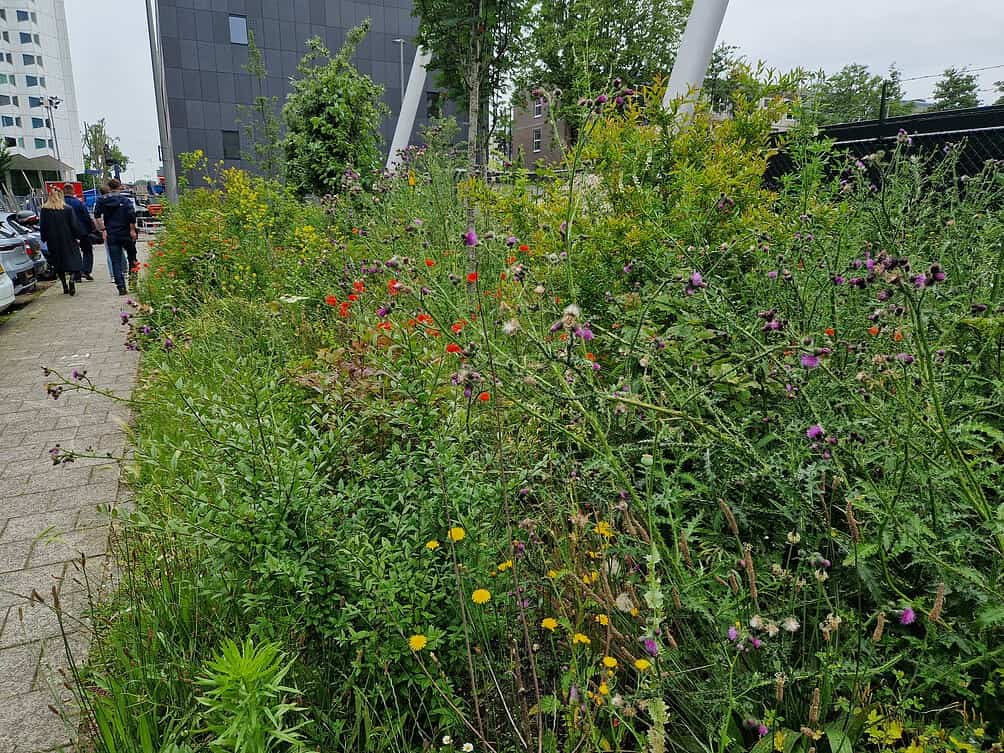
Bee hotels
Delft scientists collaborate with the biodiversity center Naturalis and fellow researchers from the University of Leiden. In addition to the dry area, they are also experimenting with a wet version of the bocage, which was started earlier this year. The researchers are expected to see the first results from the wet bocage later, while the first outcomes of the dry one have already been noticed. “Biology students have been working on an inventory, and more bee species have been found,” underlines Hoonhout. Bees’ presence is a key indicator of biodiversity well-being.
As the walk continues, a bloomy corner stands out as a proper bee hotel, curated by a group of students last year. “There are 375 species of wild bees in the Netherlands, and 70% of them nest on the ground. There are not many places for them to nest without the bikes’ nuisance, so we have to plant more of them. It looks messy, but it is very neatly done, if you ask me,” underlines Tillie.
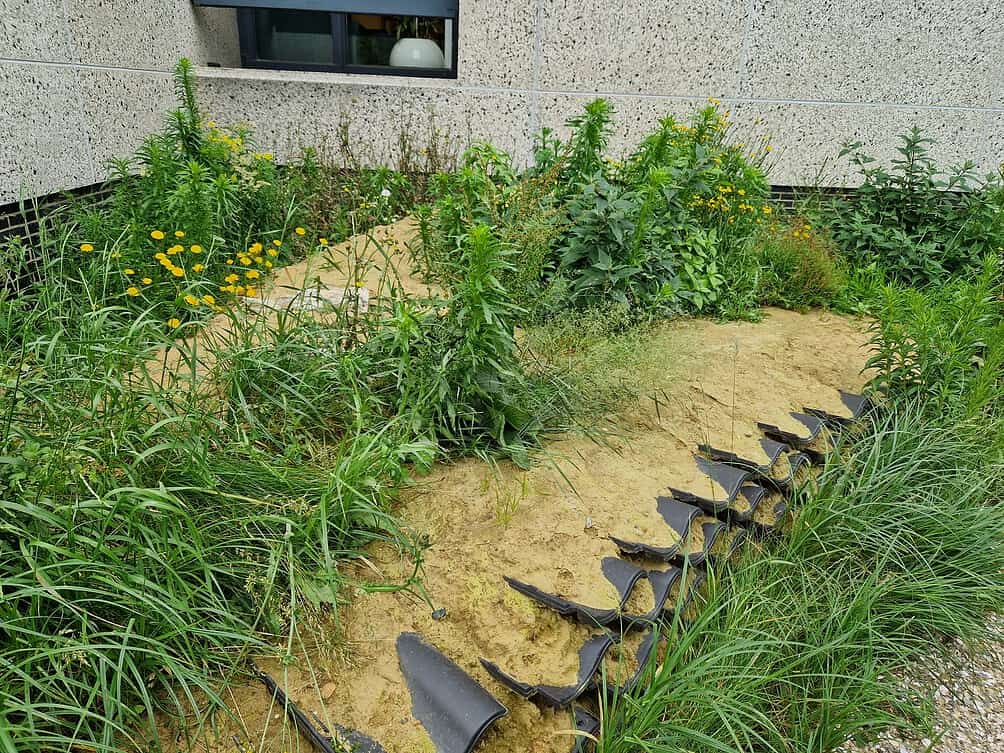
A climate forest
The centerpiece of the university’s efforts, is the Urban Climate Grove. The courtyard in front of the Faculty of Architecture and Built Environments works are in full swing. The Grove is done in the form of a tree-rich wadi – an Arabic word for riverbed – which will not only provide a cooling effect but will also be the basis for further research. The wadi comes with a relevant biodiversity nurturing component, allowing for soil, insects, and birds to thrive, providing space for 25 different trees, and letting a forest flourish under them.
The courtyard—where previous experiments with potted trees were conducted—is being transformed. The former yard bricks are being sold and replaced by second-use ones, which will lie on a foundation of crushed clinkers from the campus, as opposed to conventional sand. This choice, part of an urban design approach known as the Stockholm method, helps trees. “It provides a foundation that facilitates tree sprouting, with roots that find their way through different kinds of stones,” clarifies De Wolf.
An essential aspect of the wadi is water management. “Water doesn’t have to be pumped away quickly; rather, we want to bring it to the wadi,” explains Tillie. The faculty building gutters will be disconnected from the sewage network and linked to above-ground spouts to carry water to the wadis. In the context of the paving, the surface will be sloping towards the wadi to provide trees with as much water as possible.
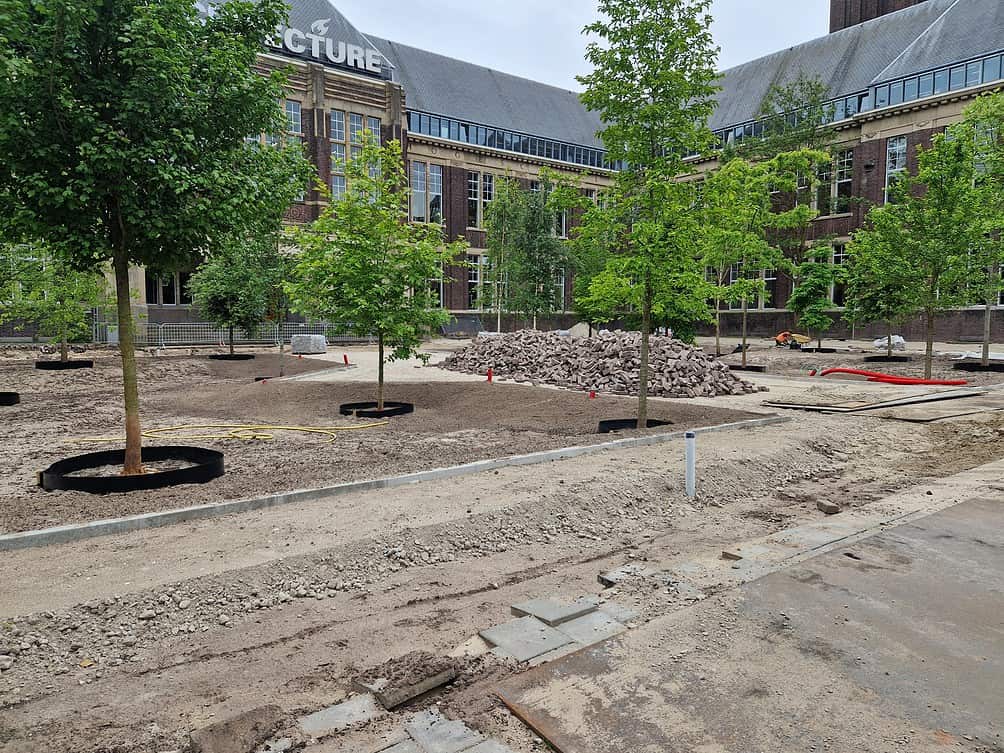
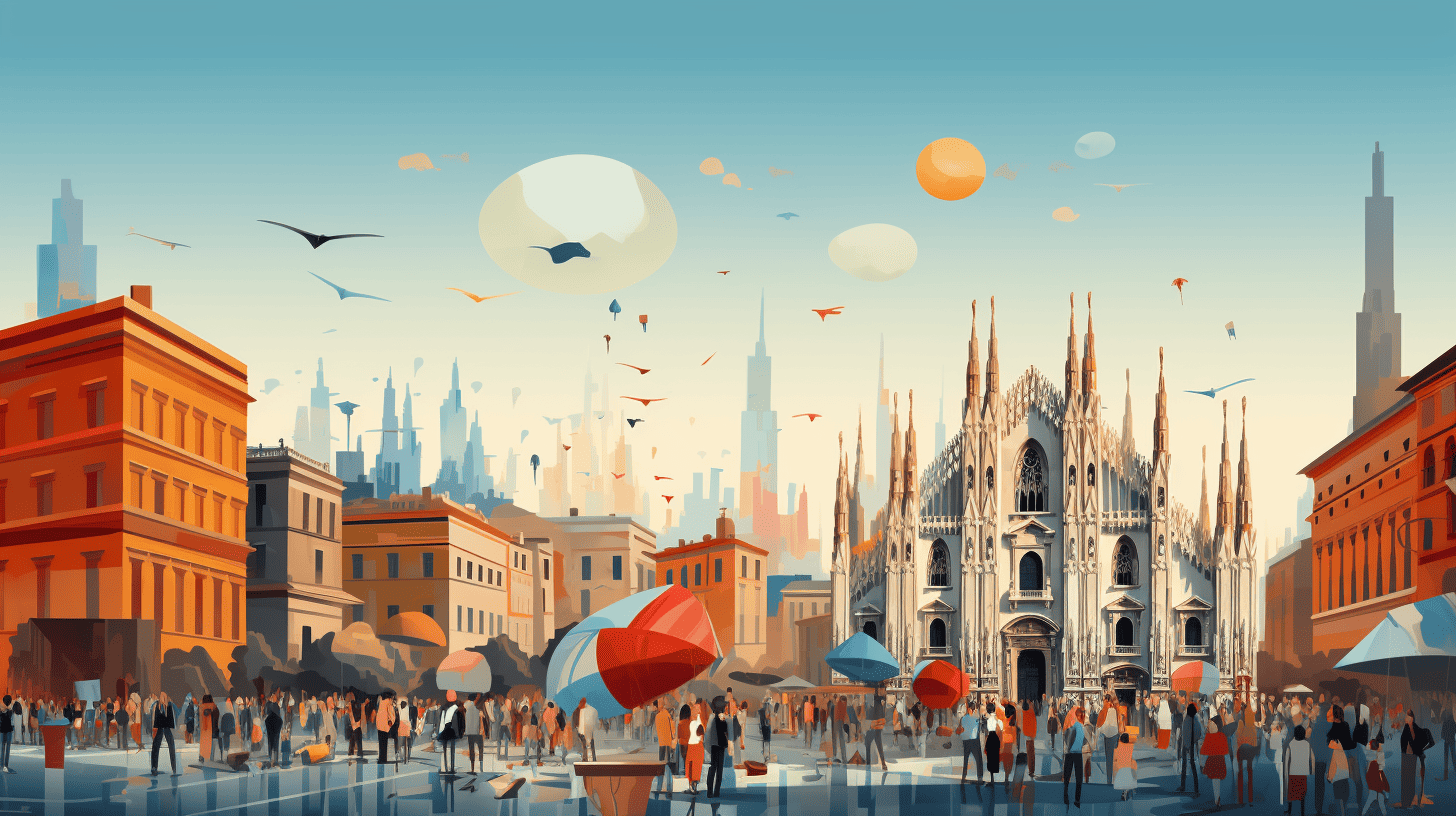
Moss impact
Just a few steps away from the architecture faculty is the hortus botanicus. There, Max Veeger, has his test ground. He is a Ph.D. researcher who is investigating the potential benefits of bioreceptive concrete, where moss can flourish. In addition to the refreshing effect trees and water bring to cities, giving space to moss can also positively affect urban settlements.
“Moss relieves from the heat stress, but it is also a powerful air filter,” underlines Veeger. Most importantly, moss’ cooling effect lies in water evaporation during the hottest days. Besides, moss can shade some of the sun’s thermal energy, cooling off the underlying concrete. The actual moss usage still needs to be fully explored. In these weeks, Veeger is testing moss properties with the warmer weather.
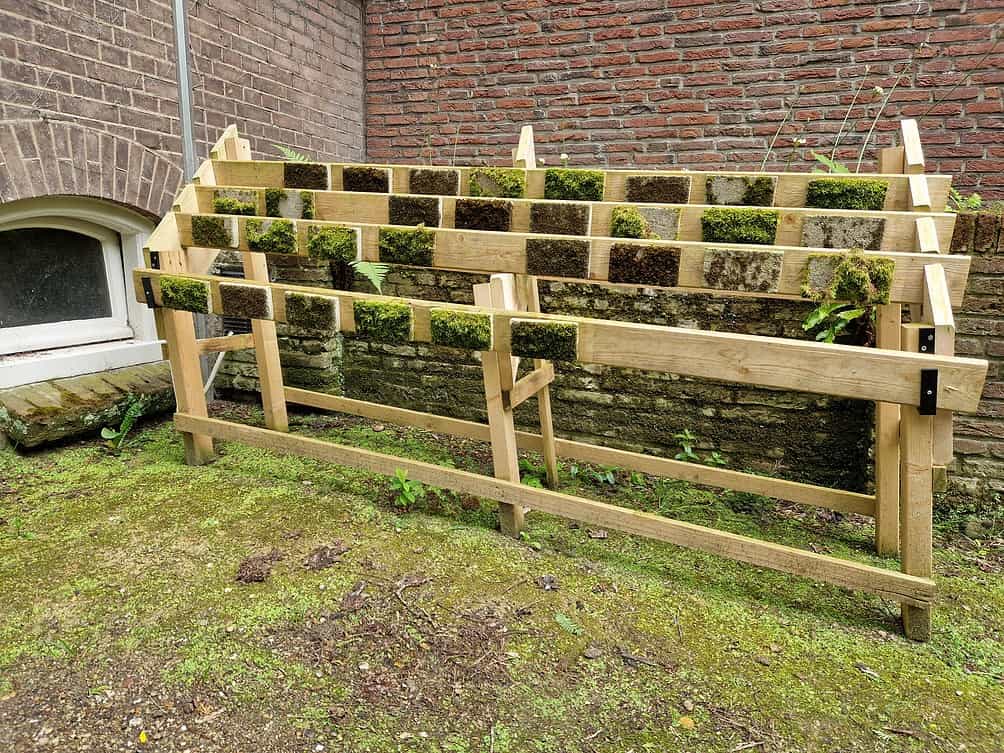
And there is more that moss can do, having good insulating properties. To this extent, the bioreceptive concrete is designed to allow mosses to grow easily on it. “This goes against the idea that moss damages concrete. Research showed that it is probably the opposite. For example, it reduced freeze-dry cycles in the concrete. This phenomenon happens when there is water inside the material, creating damage as it freezes and melts. Moss can limit it,” he keeps on explaining.
The urgency to make cities ready is pressing even more so that by 2050, two in three people will live in cities, as per an analysis by the United Nations. Bocages, urban groves, and moss can make them more liveable.

